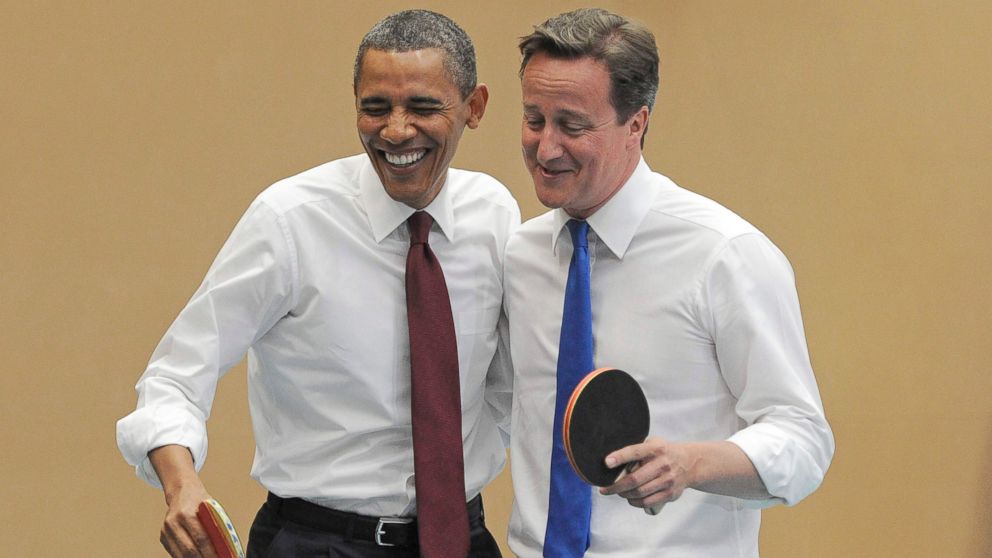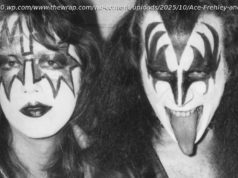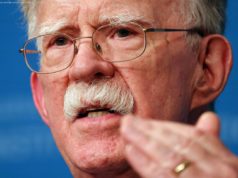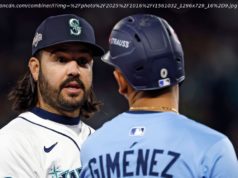 President Franklin Delano Roosevelt and British Prime Minister Winston Churchill meet in Quebec, June 1, 1944. After the successful D-Day landings in Normandy in June 1944, the two leaders met in Quebec to agree their policy on the treatment of Germany after the war. Churchill is credited with coining the term “special relationship” to describe ties between the U. S. and Britain.
President Franklin Delano Roosevelt and British Prime Minister Winston Churchill meet in Quebec, June 1, 1944. After the successful D-Day landings in Normandy in June 1944, the two leaders met in Quebec to agree their policy on the treatment of Germany after the war. Churchill is credited with coining the term “special relationship” to describe ties between the U. S. and Britain.
President John F. Kennedy and Britain’s Prime Minister Harold Macmillan enter the Key West limits en route to their conference at the Key West Naval Base, Key West, Florida, March 26, 1961. The two leaders became friends despite their significant age gap of 23 years.
British Prime Minister Harold Wilson and President Lyndon Johnson at the White House in Washington, April 1, 1965. The “special relationship” between the U. K. and the U. S. hit a rough patch under Prime Minister Wilson and President Johnson. Wilson refused U. S. requests to send British troops to help American troops in the Vietnam War, a war that Johnson would face strong criticism for getting involved in.
President Richard Nixon and British Prime Minister Harold Wilson at Chequers, the official country residence of the British prime ministers, March 5, 1969. Nixon and Wilson’s relationship had a rocky start. Prime Minister Wilson appointed John Freeman, who had once described Nixon as a « man of no principle, » as ambassador to Washington. On his visit to the U. K., Nixon greeted Freeman respectfully, which led Wilson to write a letter thanking Nixon for “one of the kindest and most generous acts.”
President Jimmy Carter, left, waves to those on the lawn of the White House who came to greet the British Prime Minister James Callaghan, second from right, and his wife Audrey Callaghan, second from left, March 10, 1977, in Washington. The traditional 19-gun salute for Callaghan was nixed by D. C. police due to a hostage situation nearby the White House, The Washington Post reported at the time.
Britain’s Prime Minister Margaret Thatcher, left, and President Ronald Reagan dance in the foyer of the White House during a State Dinner in Thatcher’s honor in Washington, Nov. 16, 1988. Perhaps no other pair of president and prime minister since FDR and Churchill epitomized the U. S.-U. K.’s “special relationship” than the Iron Lady and the Gipper. Reagan called Thatcher “the best man in England” and Thatcher once said Reagan was “the second most important man in my life.” First lady Nancy Reagan referred to the two as “political soulmates.”
President George Bush, right, and British Prime Minister Margaret Thatcher, left, drive away in a golf cart, Nov. 24, 1989, from the helicopter landing zone at Camp David. When Iraq’s Saddam Hussein invaded Kuwait in 1990, Thatcher famously told Bush it was “no time to go wobbly.”
President Bill Clinton, right, laughs at a comment made by British Prime Minister John Major during a press conference at the White House in Washington, April 4, 1995. Major and Clinton’s relationship was tense because Major backing Clinton’s opponent in the 1992 presidential race, George H. W. Bush.
President George W. Bush and British Prime Minister Tony Blair shake hands after a press conference in Thurmont, Maryland, down the road from the presidential retreat Camp David, Feb. 23, 2001. Blair backed Bush’s decision to send troops into Iraq, earning him the nickname of Bush’s “lapdog” from the British press and public.
President Barack Obama and Britain’s Prime Minister David Cameron play table tennis at Globe Academy, May 24, 2011, in London. “He sometimes calls me ‘bro’” Cameron said of Obama. In 2016, Obama, however, criticized the U. K.’s approach to intervention in Libya, making things awkward. The White House later released a statement calling Cameron “as close as a partner as the president has had.”






